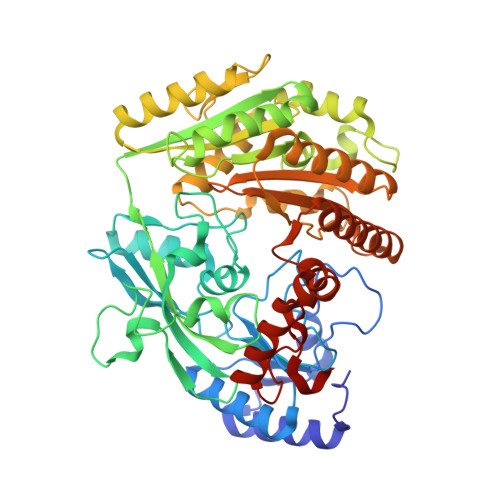Discovery, Biocatalytic Exploration and Structural Analysis of a 4-Ethylphenol Oxidase from Gulosibacter chungangensis.
Alvigini, L., Gran-Scheuch, A., Guo, Y., Trajkovic, M., Saifuddin, M., Fraaije, M.W., Mattevi, A.(2021) Chembiochem 22: 3225-3233
- PubMed: 34523783
- DOI: https://doi.org/10.1002/cbic.202100457
- Primary Citation of Related Structures:
7PBG, 7PBI - PubMed Abstract:
The vanillyl-alcohol oxidase (VAO) family is a rich source of biocatalysts for the oxidative bioconversion of phenolic compounds. Through genome mining and sequence comparisons, we found that several family members lack a generally conserved catalytic aspartate. This finding led us to study a VAO-homolog featuring a glutamate residue in place of the common aspartate. This 4-ethylphenol oxidase from Gulosibacter chungangensis (Gc4EO) shares 42 % sequence identity with VAO from Penicillium simplicissimum, contains the same 8α-N 3 -histidyl-bound FAD and uses oxygen as electron acceptor. However, Gc4EO features a distinct substrate scope and product specificity as it is primarily effective in the dehydrogenation of para-substituted phenols with little generation of hydroxylated products. The three-dimensional structure shows that the characteristic glutamate side chain creates a closely packed environment that may limit water accessibility and thereby protect from hydroxylation. With its high thermal stability, well defined structural properties and high expression yields, Gc4EO may become a catalyst of choice for the specific dehydrogenation of phenolic compounds bearing small substituents.
Organizational Affiliation:
Department of Biology and Biotechnology "Lazzaro Spallanzani", University of Pavia, Via Ferrata 9, 27100, Pavia, Italy.
















